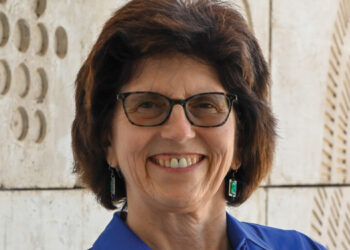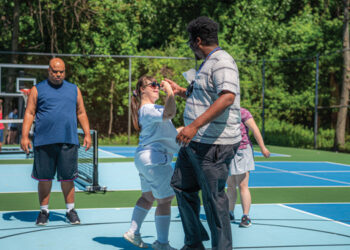Experts share their top cleanliness practices to keep your facility safe for staff and members this year.
January is often viewed as a clean slate. It’s a new year with new goals to set, and in the health and fitness industry, goals often bring about members who need your help to achieve them.
As a result of the pandemic, many are wondering if there will still be a New Year’s rush, new members to help and new staff to hire. All in all, one thing is for sure: one of your team’s goals to set this year should be providing the safest facility for members to feel comfortable in.
At the YMCA of Greater Tulsa in Tulsa, Oklahoma, Kyle Wilkes, the vice president of mission advancement, said his team invested in multiple electrostatic cleaning devices to use at each branch multiple times a week to clean higher traffic areas based on occupancy rates. “This has certainly been a huge relief to us and allows us to increase our cleaning significantly,” said Wilkes. “Electrostatic cleaning is just a very high-grade way of being able to clean at a much higher level than traditional cleaners, and it goes over the entire surface of the equipment and the facility.”
Additionally, Wilkes explained the Tulsa Y branches removed a significant amount of equipment to ensure proper social distancing. “We always try to stay above the minimum standard for local guidelines and recommendations,” he said. “So, if it’s a six-foot requirement, then we stay somewhere between the seven to 10-foot gap between our machines, and same thing for our group exercise areas.”
To be able to offer properly spaced fitness classes, Wilkes’ team moved them into gymnasiums. Specific courts are designated for specific programs, and time is given to clean each court and equipment thoroughly before and after class.
Edwin Monroe, the director of housekeeping at the Joan and Alan Bernikow JCC of Staten Island in Staten Island, New York, also said his team incorporates designated cleaning times. Below, he shares his top three cleanliness practices for member and staff safety:
- Don’t leave cleaning just to the housekeeping or maintenance staff. Because the JCC has several large buildings, non-housekeeping department staff are encouraged to also wipe down shared spaces in between uses.
- Designate cleaning times and close off the areas to the public during these times. For example, breaks in between pool or gym sessions are incorporated for staff to sanitize.
- Make it mandatory for people to wear the proper PPE, social distance and wash their hands/use hand sanitizer when inside the building.
Another safety protocol incorporated by the Tulsa Y and surrounding branches is reducing social spaces. Areas where members would normally gather and socialize were reduced by removing coffee stations and limiting seating.
In altering this popular social feature of the Y, Wilkes said the overall feedback has been very positive. He shared a recent quote from a long-time member: “I love coming here. I feel very safe here — safer than I feel at other places.”
“That ultimately is an indicator to us people do continue to trust us and what we’re doing,” said Wilkes. “Our facilities continue to increase in the retention of the participants who are coming in, and we’re finding they’re very comfortable in our facilities with these measures in place.”
At the Joan and Alan Bernikow JCC, staff have incorporated a number of tactics to effectively carry out new cleaning and safety procedures, including following local guidelines and developing new checklists.
“We keep cleaning logs and checklists for our buildings in accordance with city, state and federal guidelines,” said Monroe. “Our housekeeping staff use one, as well as each individual department. It ensures specific staff are assigned to specific areas and they certified they have cleaned these areas in a timely fashion. We have also trained staff on disinfecting practices.”
The Tulsa Ys also deployed new training in addition to a checklist that is documented to ensure staff rotate through the list during each shift. This list also makes sure staff are wearing gloves and masks throughout their shift, and temperature checks are taken prior to entering the area they are reporting to for that day.
Overall, a great rule of thumb for any new year, pandemic or not, is to be prepared and keep your facility safe. Wilkes suggested using safety as the No. 1 filter for all decisions moving forward, and trying to be as proactive — not reactive — as possible. This includes following local guidelines, exceeding standards, having multiple plans, highly communicating what expectations are, etc.
“As we move into the winter months, we’re going to see people coming back into the facilities at a high rate, versus the opportunity to exercise outdoors,” said Wilkes. “Having everything in place to be able to have a good sense for what your maximum occupancy is in each one of your rooms, and space that out appropriately, is going to be a critical piece as you prepare for reopening.”










